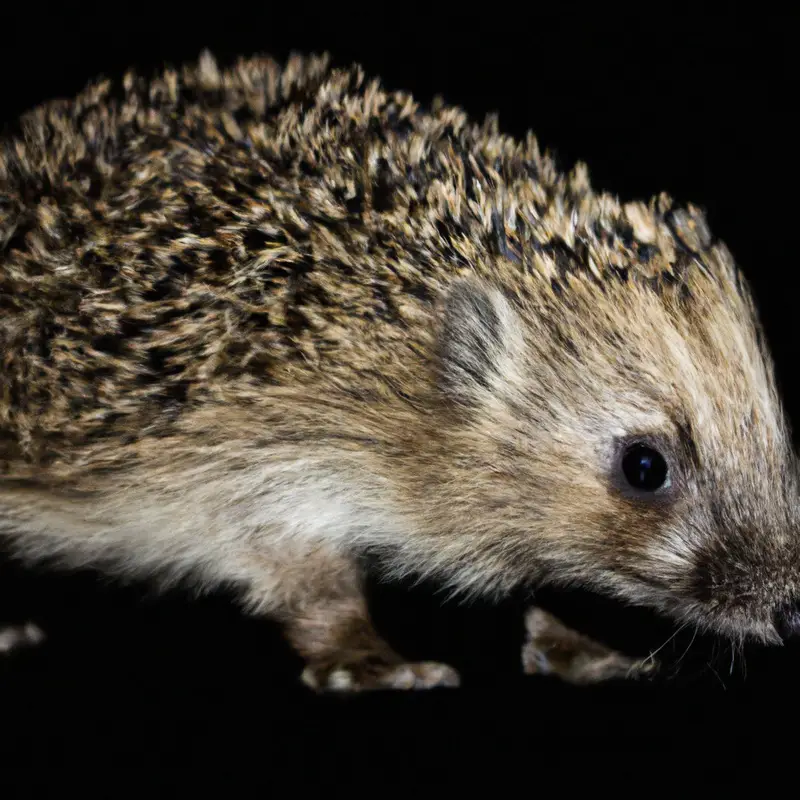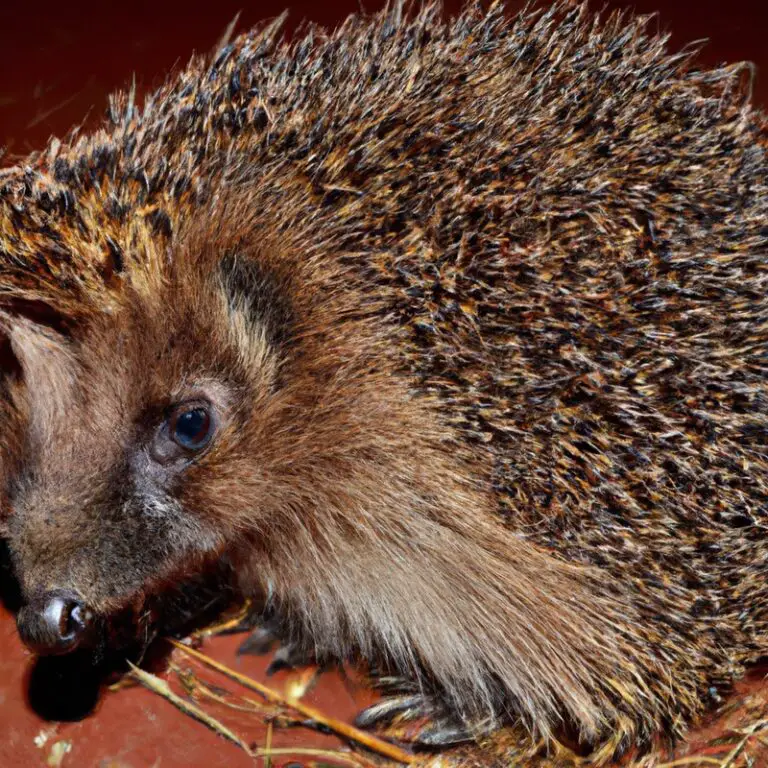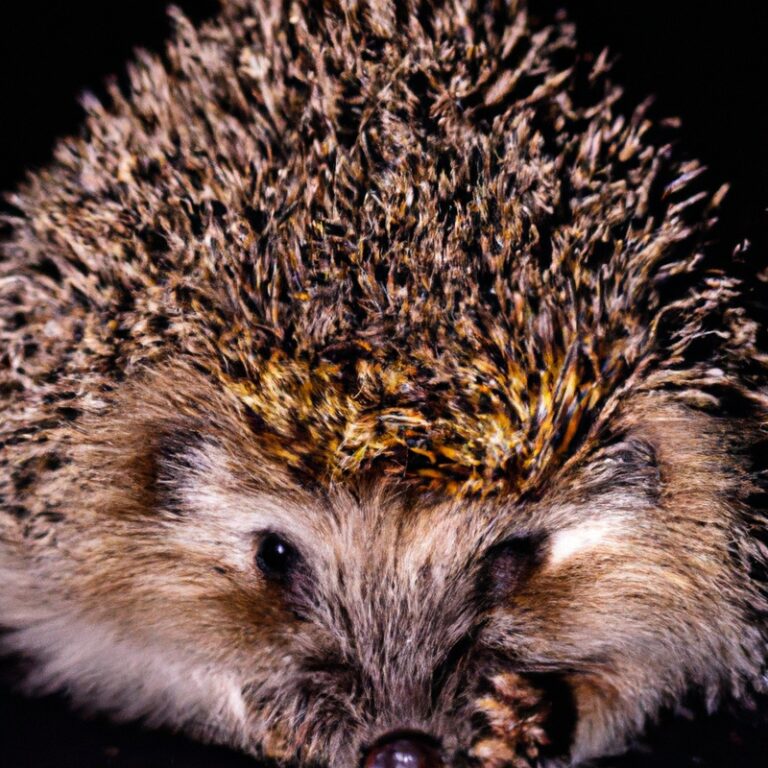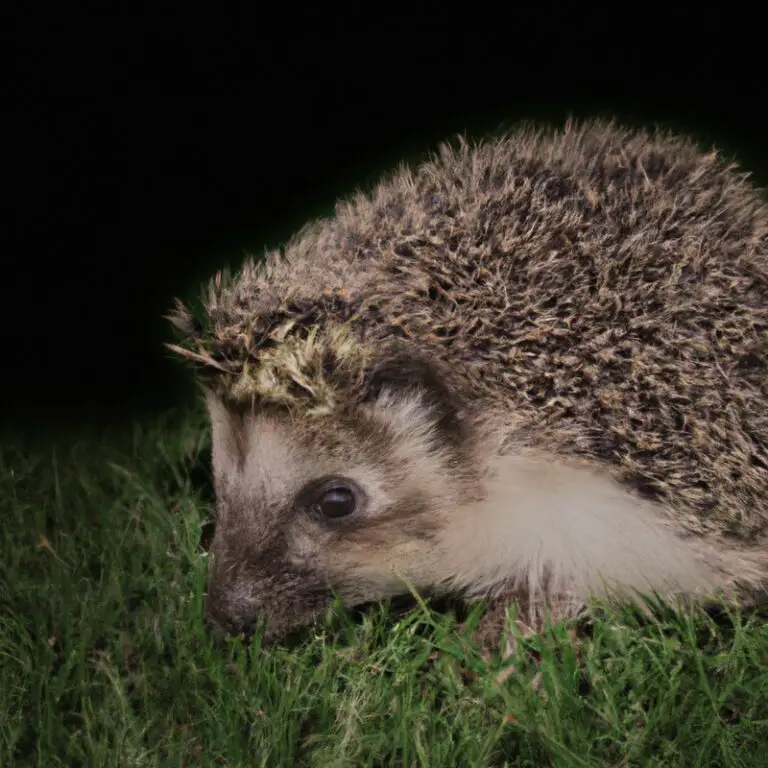How To Help Hedgehogs During The Breeding Season?
Key Takeaways:
- Provide secure nesting areas for hedgehogs during the breeding season.
- Ensure a reliable, clean water source for hedgehogs.
- Avoid using chemicals or pesticides that can harm hedgehogs.
- Create hedgehog-friendly gardens by planting native vegetation and providing food options.
Are you ready to dive into the fascinating world of hedgehogs and learn how to support them during their most vulnerable time? The breeding season is a critical period for these adorable spiky creatures, and they need our help to ensure their survival.
Understanding their life cycle and the unique challenges they face during this time is key.
In this article, we’ll explore how you can create a hedgehog-friendly garden, minimize hazards and predators, encourage breeding and reproduction, and support conservation efforts. Get ready to become a hedgehog hero and make a real difference!
| Actions | Benefits |
|---|---|
| Provide appropriate food and water | – Helps hedgehogs gain necessary nutrients for breeding – Ensures they stay hydrated during the season |
| Create safe habitats | – Offers secure places for hedgehogs to breed and rest – Reduces the risk of predators |
| Minimize disturbance in breeding areas | – Allows hedgehogs to focus on feeding and caring for their young – Avoids stress and potential abandonment |
| Avoid using harmful chemicals in gardens | – Prevents potential harm to hedgehogs and their offspring – Preserves a safe environment for them |
| Support local hedgehog rescue organizations | – Provides assistance and resources for injured or orphaned hedgehogs – Contributes to their conservation and protection |
The Importance of Helping Hedgehogs during the Breeding Season
Helping hedgehogs during the breeding season is vital for their survival and the continuation of their species.
Understanding the Life Cycle of Hedgehogs
Hedgehogs have a fascinating life cycle.
It starts with mating, which usually occurs in the spring or summer.
After mating, the female hedgehog builds a nest where she will give birth to her hoglets.
The hoglets are born blind and helpless, relying on their mother for warmth and food.
As they grow, they start to venture out of the nest and explore their surroundings.
Eventually, they become independent and leave their mother’s care.
Understanding the different stages of a hedgehog’s life cycle is key to helping and protecting them during each phase.

The Unique Challenges of the Breeding Season
The breeding season presents unique challenges for hedgehogs. During this time, hedgehogs are focused on finding mates and producing offspring, which can be physically demanding.
They may have to travel long distances in search of a suitable partner.
In addition, hedgehogs are more vulnerable to predators during this time, as they can become preoccupied with mating and may not be as alert. Furthermore, hedgehogs need safe and suitable nesting sites for raising their young, which can be limited in urban areas.
It is important to be mindful of these challenges and take steps to support hedgehogs during the breeding season.
Why Helping Hedgehogs is Crucial during this Period
Helping hedgehogs during their breeding season is crucial for their survival. At this time, hedgehogs are focused on finding mates and building nests to care for their young.
They need access to food, water, and safe spaces in urban and rural areas.
By providing these essentials, we can support their breeding efforts and ensure a healthy hedgehog population. This includes creating hedgehog-friendly gardens, avoiding harmful pesticides, and being mindful of garden activities that may disturb their nests.
By taking these simple steps, you can make a real difference in the lives of hedgehogs.

Creating a Hedgehog-friendly Garden
To create a hedgehog-friendly garden, you need to provide suitable shelter and nesting sites, ensure a safe and accessible environment, and offer food and water sources.
Providing Suitable Shelter and Nesting Sites
To provide suitable shelter and nesting sites for hedgehogs, you can:
- Provide piles of leaves or logs in a quiet, undisturbed corner of your garden for hedgehogs to use as a nest.
- Avoid using pesticides or chemicals in your garden, as they can be harmful to hedgehogs.
- Leave areas of long grass or wildflower meadows for hedgehogs to forage and build their nests.
- Install a hedgehog house or box in a secluded area, filled with leaves or hay for added warmth.
- Ensure there are small entrances to your garden so hedgehogs can easily access and leave without any obstacles.
Remember, providing suitable shelter and nesting sites is crucial in helping hedgehogs during the breeding season.
Ensuring a Safe and Accessible Environment
To ensure a safe and accessible environment for hedgehogs, it’s important to prioritize their needs. Here’s how you can do it:
- Provide shelter: Create natural hiding places like log piles or dense bushes where hedgehogs can seek refuge.
- Avoid using pesticides: Chemicals can be harmful to hedgehogs and their food sources. Opt for organic pest control methods instead.
- Install ramps: If you have ponds or deep trenches in your garden, consider adding ramps to help hedgehogs escape in case they fall in.
- Remove hazards: Clear away any sharp objects, netting, or debris that could pose a risk to hedgehogs and cause injury.
- Ensure access: Hedgehogs need easy access to gardens, so create small holes or gaps in fences to allow them to pass through.
By taking these simple steps, you can create a safe and accessible environment for hedgehogs, ensuring their well-being and protecting this wonderful creature.
Offering Food and Water Sources
To help hedgehogs during the breeding season, it is important to offer food and water sources in your garden. Place shallow dishes of fresh water in a quiet spot.
Hedgehogs also need a varied diet, so you can put out specialized hedgehog food or offer cat or dog food (not fish-based).
Avoid using bread and milk as it can be harmful to them. Hedgehogs will appreciate mealworms, small pieces of fruits, and vegetables as well.
By providing food and water, you can support the health and well-being of hedgehogs during the breeding season.
Minimizing Hazards and Predators
To minimize hazards and protect hedgehogs from predators, it is important to identify and address potential risks and create a safe environment for them.
Identifying and Addressing Potential Hazards
During the hedgehog breeding season, it’s important to identify and address potential hazards.
Make sure to check your garden for any gaps or holes where hedgehogs could become trapped.
Keep them away from chemicals, such as pesticides, as they can be harmful.
Don’t leave out piles of debris or rubbish, as hedgehogs might get stuck or injured.
When using garden tools, be careful not to harm any hedgehogs that might be hidden in the undergrowth.
Protecting Hedgehogs from Predators
Hedgehogs are vulnerable to various predators, but there are ways to protect them.
- Create a safe habitat by providing dense shrubs and piles of leaves or logs where they can hide from predators.
- Install fencing around your garden to prevent larger predators like foxes from gaining access.
- Avoid using pesticides or chemicals in your garden, as these can harm hedgehogs and their food sources.
- Keep your garden tidy and free of clutter to reduce hiding spots for predators.
- Ensure there are no openings in walls or fences that predators can squeeze through.
Remember, by taking these steps, you can help protect hedgehogs from predators and create a safe environment for them to thrive.
Encouraging Breeding and Reproduction
To encourage hedgehog breeding and reproduction, provide suitable nesting boxes and enhance their habitat. Promote healthy nutrition for hedgehogs to support their reproductive health.
The Role of Nest Boxes and Habitat Enhancements
Nest boxes and habitat enhancements play an important role in supporting hedgehogs during the breeding season. Providing suitable nesting sites can help hedgehogs find shelter and create a safe space for raising their young.
You can make simple hedgehog houses using materials like wood or logs.
Enhancing your garden with dense vegetation, leaf piles, and natural features will also attract hedgehogs and provide additional nest sites.
Promoting Healthy Nutrition for Hedgehogs
Hedgehogs need a well-balanced diet to stay healthy.
To promote their nutrition, you should offer a mix of wet and dry cat food, without fish flavors.
High-quality dry dog food can also be included.
Supplement their diet with insects, fruits, and vegetables.
Ensure they have access to fresh water every day.
Avoid giving them milk, as it can upset their stomachs.
Providing a varied diet is key to supporting their overall health.
Supporting Hedgehog Conservation Efforts
You can support hedgehog conservation efforts in two key ways:
- Getting involved with local wildlife rescue organizations
- Reporting hedgehog sightings and helping with research.
Getting Involved with Local Wildlife Rescue Organizations
If you’re looking to get involved with local wildlife rescue organizations, there are a few steps you can take.
- Research: Start by researching local wildlife rescue organizations in your area. Look for ones that align with your interests and values.
- Volunteer: Many wildlife rescue organizations rely on volunteers to help with various tasks, such as animal care, fundraising, and outreach. Reach out to these organizations to inquire about volunteer opportunities.
- Attend Events: Keep an eye out for events hosted by local wildlife rescue organizations. These events are a great way to learn more about their work and potentially get involved.
- Donate: If you’re unable to volunteer or attend events, consider making a donation to support the organization’s efforts. Every little bit helps!
Remember, wildlife rescue organizations play a crucial role in protecting and rehabilitating our local wildlife.
Your involvement, whether big or small, can make a difference in their mission.
Reporting Hedgehog Sightings and Helping with Research
If you spot a hedgehog in your garden or the wild, you can report the sighting to local hedgehog preservation organizations or wildlife authorities. Your observations can help researchers track hedgehog populations and their conservation needs.
Some organizations may have online reporting forms or helpline numbers to make it easy for you to contribute to their research.
Sharing your hedgehog sightings is a simple but valuable way to assist in their study and protection.
Frequently Asked Questions
When is the breeding season for hedgehogs?
Hedgehogs typically breed between May and September, with peak activity happening around June and July.
During this time, male hedgehogs roam in search of females to mate with.
If you come across a hedgehog during this period, it’s best to observe from a distance to avoid disturbing them.
Providing a safe and undisturbed environment during the breeding season is essential for hedgehog populations to thrive.
What should I feed hedgehogs during breeding season?
During the breeding season, it’s important to provide hedgehogs with a balanced diet.
I recommend feeding them a combination of wet or dry cat food, mealworms, and chopped fruits or vegetables.
Avoid giving them cow’s milk, as hedgehogs are lactose intolerant.
Ensure there is always fresh water available for them to drink.
Offering a variety of food will help to meet their nutritional needs and support their breeding success.
How can I tell if a hedgehog is pregnant?
To determine if a hedgehog is pregnant, look for physical signs such as a rounded belly, weight gain, and enlarged nipples. Another clue is a decrease in activity level and appetite.
Creating a nesting area is another indication that she may be expecting.
If you suspect pregnancy, consult a veterinarian for confirmation and guidance on appropriate care.
What should I do if I find a baby hedgehog?
If you find a baby hedgehog, the best thing you can do is to leave it alone and observe from a distance. Hedgehog mothers often leave their babies alone while they go out to find food.
It’s important not to interfere or try to move them, as this can disrupt their natural behavior.
If you’re concerned about the baby hedgehog’s well-being, consider contacting a local wildlife rescue center or hedgehog rehabilitation center for guidance. They will have the expertise to assess the situation and provide the necessary care if needed.
Do hedgehogs need human intervention during the breeding season?
Hedgehogs generally do not require human intervention during the breeding season. They are independent creatures and instinctively know how to care for their young.
However, there are a few proactive steps you can take to create a hedgehog-friendly environment.
Providing food, water, and shelter can support them during this time. It’s important to respect their natural behavior and avoid excessive handling or disturbance, so they can raise their offspring undisturbed.
Final Verdict
Helping hedgehogs during the breeding season is crucial for their survival and population growth. By understanding their life cycle and the unique challenges they face during this time, we can take action to create hedgehog-friendly environments in our gardens.
Providing suitable shelter, minimizing hazards and predators, and promoting breeding and reproduction are key steps in supporting hedgehog conservation efforts.
By getting involved with local wildlife rescue organizations and reporting sightings, we can contribute to research and conservation initiatives. Together, we can make a difference and ensure a thriving future for these enchanting creatures.








